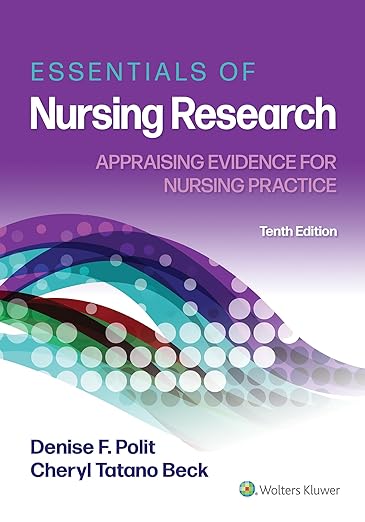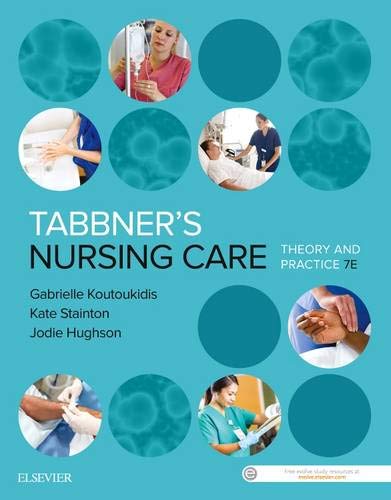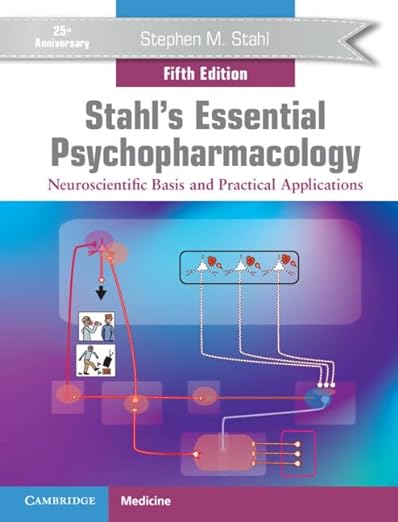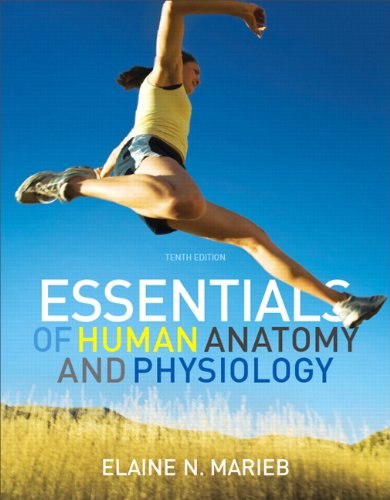Test Bank For Essentials of Nursing Research 10th Edition
Test Bank For Essentials of Nursing Research 10th Edition
Chapter 2
- Research utilization is a process that begins with which of the following? A) A clinical problem that needs to be solved
B) A problem-focused trigger
C) A knowledge-focused trigger or research findingD) A well-worded clinical question - Which of the following is an example of a systematic review? A) An RCT study published in the journal Nursing Research B) A meta-analysis from the Cochrane database
C) A synopsis published in Evidence-Based NursingD) A clinical practice guideline from the National Guideline Clearinghouse - Most evidence hierarchies put which of the following at the pinnacle? A) Randomized clinical trials (RCTs)
B) Systematic reviews of multiple studies
C) Quality improvement projectsD) It depends on the research question - Which of the following can be used to critically appraise clinical practice guidelines? A) A systematic review from the Cochrane Collaboration
B) The Iowa model
C) The AGREE instrumentD) An evidence hierarchy - Which of the following models was explicitly developed with the idea that individual nurses could engage in RU-type activities?
A) Iowa Model
B) Johns Hopkins ModelC) Cochrane Model D) Stetler Model - In the following clinical question, what is the Outcome (O component):
effect of relaxation therapy versus biofeedback on the functional ability of patients with rheumatoid arthritis?
A) Functional ability
B) Rheumatoid arthritis
C) Biofeedback
D) Relaxation therapy
Page 1
What is the
7. In the following clinical question, what is the Intervention/influence/exposure (I component): Does taking antidepressants affect the risk of suicide in cognitively impaired adolescents?
A) Adolescence
B) Suicide
C) Antidepressant use D) Cognitive impairment
- In the following clinical question, what is the Population (P component): depression affect dyspnea in patients with chronic obstructive pulmonary disease (COPD)?
A) Patients who are stressed
B) Patients who are depressed
C) Patients who experience dyspnea
D) Patients with COPD - In the following clinical question, what is the Comparison (C component): Does chronic stress affect inflammatory responses in older men with atherosclerotic disease? A) Chronic stress
B) Inflammatory response
C) Atherosclerotic disease
D) There is no “C” component - In which of the following clinical questions is fatigue the “I” component?
A) Does fatigue affect agitation in cognitively impaired elders?
B) Does a physical activity intervention affect fatigue in patients undergoing cardiacrehabilitation?
C) What is the meaning of fatigue among patients with sleep apnea?
D) Does the level of depression of patients suffering from chronic fatigue improve byparticipating in an exercise intervention?














Reviews
There are no reviews yet.